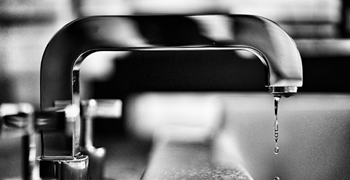14/08/2023
What is subsidence?
When record temperatures hit the UK in 2022, the soaring heat had a profound effect on our planet. This included the shrinking of clay-heavy soil, which led to increased subsidence risks for those whose homes are built on this type of ground.
According to the Association of British Insurers (ABI), the record-breaking summer resulted in 23,000 subsidence claims, costing insurers an estimated £219 million.
With climate change continuing apace, scorching temperatures and drought are likely to become more common occurrences. This means subsidence could put more of our homes under threat.
Understanding subsidence and taking preventive measures is therefore crucial to protect your property and avoid potential damage.
To help you, this article will define subsidence, examine what causes it and suggest some effective prevention methods to keep your home safe.
What is subsidence?
Subsidence refers to the downward movement or sinking of the ground beneath a building.
It is primarily caused by changes in the soil’s composition and moisture content. When the soil supporting a structure weakens or shrinks, it can cause the structure’s foundation to sink, leading to property damage. This is particularly the case with clay soil, which can expand and contract more than other soil types.
Natural ground subsidence caused by soil change is usually triggered by very dry or very wet conditions. A long, dry summer or flooding caused by excessive rain or a drain leak can often be risk factors. The former causes soil to contract, while extra moisture can make it expand. Both cause instability.
What causes subsidence?
Several factors contribute to house subsidence. These include:
- Soil composition: Certain types of soil, such as clay, shrink or expand based on moisture levels. When the soil’s composition changes, such as during prolonged dry spells, it can lead to instability and then building subsidence.
- Trees and foliage: Some trees, particularly those with deep and extensive root systems, can extract large amounts of moisture from the soil. This causes the ground to shrink and subside. However, this is more of a risk factor for homes that were built before the 1950s.
- Leaking drains or water pipes: Water leakage from drains or underground pipes can saturate the soil, washing away its supporting structure and causing subsidence.
What are the worst trees for subsidence?
Certain tree species are more likely to contribute to subsidence. This is due to their extensive root systems and high moisture absorption. On average, a tree’s root system spreads up to three times the height of the tree.
The worst trees for subsidence include willows, poplars, oaks, elms and aspen trees. The fast-growing evergreen, leylandii, can also be a problem if it is planted close to your property. Its root system grows quickly and in proportion to its overall height, which means that a significant amount of moisture can be sucked from the soil. The risks posed by this evergreen to your home are particularly high if your home was built before the 1950s, as your foundations are likely to be shallower.
If you live in a clay soil area and any of these trees are located close to your property, it is important to take action to manage their impact on the soil.
Regular pruning is an absolute must. Due to their fast-growing nature, leylandii can be cut back significantly twice a year. Other trees can be mildly pruned every year with a more substantial cut-back taking place every 3-5 years. If you’re unsure, talk to a qualified tree surgeon.
If you live in a conservation area, you will need to consult your local authority before pruning or removing trees. This will also be the case if your tree has a Tree Preservation Order in place.
Is structural movement the same as subsidence?
Not all structural movements are necessarily subsidence-related.
Settlement, which is a common occurrence in new buildings as the soil compacts, can cause minor cracks. However, subsidence cracking tends to be more significant and is a sign of potentially damaging movements caused by soil-related issues.
What does subsidence look like?
Signs of subsidence you should look out for include:
- Cracks that appear suddenly and expand in walls, particularly around doors and windows.
- Cracks wider than 3mm that are diagonal or wider at the top.
- Cracks that you can see both inside and outside your home.
- Doors or windows that suddenly become difficult to open or close.
- Rippling or wrinkling of wallpaper or paintwork, especially where the wall meets the ceiling.
Remember, not all cracks will be a sign of subsidence. Subsidence cracking is more significant and will meet the description above.
How do I find out if I have subsidence?
If you spot signs of subsidence, it is crucial to consult a professional, such as a structural engineer or a chartered surveyor.
They can conduct a thorough assessment, which may include a subsidence survey. This will show you the extent of the issue and signpost what you should do to fix the subsidence.
How to prevent subsidence
Taking steps to prevent building subsidence if you live in a clay soil area is a great way to protect your home.
To minimise the risk of subsidence, try to do the following:
- Maintain your home: Regularly inspect your property, paying attention to plumbing leaks, blocked gutters and effective drainage systems. If you spot anything that needs doing, make sure you tackle it straightaway. This will help to prevent moisture building up in your soil.
- Remove trees and bushes: If you have trees that have deep and far-reaching roots, consider removing them or relocating them further away from your property. If you’re not sure if your trees pose a risk to your property, check in with a qualified tree consultant.
- Prune your trees: If removal is not an option, regular pruning can help to control the amount of moisture taken up by the trees. Most trees will need a substantial prune every 3-5 years, with light pruning taking place annually. If you have a leylandii hedge, a thorough pruning can be carried out twice a year due to its fast growth.
Does Building Insurance cover subsidence?
Many Building Insurance and Home Insurance policies provide cover for subsidence claims. This may include paying for damage caused by the subsidence and alternative accommodation if your property is too dangerous to live in or if the repair work is very extensive.
However, all policies are different. You should therefore always check your policy to see what’s covered or speak to your insurer or broker if you’re unsure.
You may also find that if you have already claimed for subsidence that future claims will not be supported.
Talk to us about Home Insurance
Not all cracks are signs of subsidence, but being aware of the causes, signs and prevention methods of subsidence is always a good idea.
Being proactive when it comes to home maintenance and having the right Home Insurance in place can also help to protect your property from all kinds of risks.
To make sure you have the right cover in place, contact our helpful Personal Insurance team today.
Related Articles





